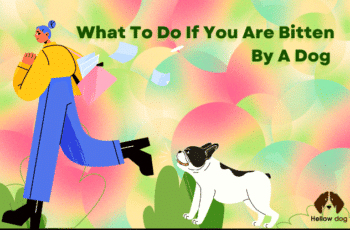The following is a guest post by Joseph Dunn, a veteran writer and editor for VeePN. Joseph spent the last 7 years creating content on everything from VPN solutions for Android phones to practical online security and privacy tips. He’s a long-time fan of Sidewalk Dog and a first-time contributor.
has a 7 years experience in writing different types of articles. Every day he tries to do all his best to write unique and useful articles for great websites.
Welcome to the wonderful world of dog ownership! Congratulations on your new furry friend. With all the joys that come with having a puppy, it’s important to remember that they require significant attention and effort.
Proper training is crucial for ensuring your pup’s happiness and well-being. If the thought of training your puppy seems daunting, fear not. We’ve got you covered with some essential tips that will guide you toward success.
Follow these tips and you’ll have a well-behaved and cherished member of your family in no time.

1. Start training as early as possible.
Start training your puppy from day one to avoid frustration in the future. Every interaction with your puppy is a chance to teach them good habits and prevent bad ones. Don’t encourage cute but unwanted behaviors like jumping for attention. Invest in proper training now to save yourself from future worries.
2. Socializing
Socializing your puppy is crucial for a well-adjusted and happy dog. Exposing your furry friend to new people, places, and situations can prevent common behavior issues such as fear, aggression, and excessive barking. To ensure your puppy’s comfort and adaptability, introduce them to various animals, sights, sounds, and handling techniques. This will not only benefit them as adults but also make trips to the vet and groomer stress-free for everyone involved.
3. Confinement
To ensure your puppy doesn’t develop bad habits, it’s important to strike a balance between confinement and freedom. While he shouldn’t be cooped up in his crate for extended periods, letting him roam free in the house can pose risks such as chewing or getting hurt. Consider confining him to a small room or kitchen with a gate or door to prevent access to potential hazards. Remember, if your pup gets a taste for destructive behavior, he’s likely to repeat it. Confinement can help avoid these situations and encourage positive habits.
Socialization is a good practice, but it can be supplemented with online training. There are many videos on how to train puppies online with actionable practices to speed up puppy development.
4. Take care of your pet’s sleep.
Is your puppy feeling anxious during those first few nights in a new place? Here’s a solution: place a stuffed animal in their crate that’s specifically designed to provide comfort. Some of these toys even have a heartbeat and can be warmed up, giving your pup the comfort of sleeping with the company.
5. Bite inhibition.
Puppy training must include bite inhibition to teach your furry friend how to use their teeth gently. Although puppies learn this from their mother and littermates, the training must continue at home. Encourage gentle play by allowing your puppy to use their mouth and pause playtime if they use their teeth too hard. This will teach them that aggression is unacceptable. Lastly, try yelping to remind them to be cautious. Bite inhibition will surely keep you safe from any accidental bites in the future.
6. Stick to a schedule.
Effective potty training for your puppy starts with establishing a consistent schedule, according to Gillihan. Most pups need to go potty after meals, naps, or playtime. The first thing in the morning, take your puppy outside to go potty. If your pup successfully relieves himself, he earns 30 to 45 minutes of playtime. After that, it’s time to return to the crate and settle down. Depending on your puppy’s energy level, playtime may last between 10 to 20 minutes.
If your puppy falls asleep in the crate, you can leave him in there longer. However, if he’s still awake, take him out of the crate after 15 minutes and give him the opportunity to go potty. If he doesn’t go, return him to the crate for another 15 minutes. Establishing a clear routine will make for faster and easier potty training.
7. Create clear incentives.
To effectively train your puppy, aim to use positive reinforcement techniques rather than punishment. While punishment can temporarily stop unwanted behavior, it doesn’t teach your puppy what you want him to actually do. In addition, harsh punishments may create behavior issues like fear or aggression. On the other hand, positive reinforcement encourages your puppy to repeat behaviors you like.
To use positive reinforcement, simply reward your puppy with praise, treats, and games for good behavior. Ignore or redirect your puppy when he misbehaves, and give him plenty of positive reinforcement when he does something you like. With time, your puppy will learn to offer good behavior on a consistent basis.
8. Gradually expand the puppy’s access.
Want to avoid accidents with your new puppy? Keep them in a confined area and gradually introduce them to the rest of your home. A helpful tip: wait one month without any accidents before giving your pup access to another room. Follow this rule of thumb for a happy, accident-free home!

9. Obedience
Start your puppy’s obedience training as soon as you bring them home – it’s never too early to establish some structure! Basic commands, such as sit, lie down, and come, are an essential foundation for a well-behaved adult dog. Encourage good behavior with positive reinforcement techniques and watch your puppy thrive.
10. Create a potty station.
When leaving your puppy alone for extended periods, it’s essential to provide a designated space for them to rest and play comfortably. Consider creating a gated room or playpen area and place your puppy’s bed and potty pad inside. This will help your puppy feel secure and prevent any accidents from occurring.
Conclusion
These 10 tips will surely help you create a happy, healthy home with your puppy. Remember to be consistent and patient when training your pup. With time and dedication, you’ll have a well-behaved companion by your side! Good luck!


